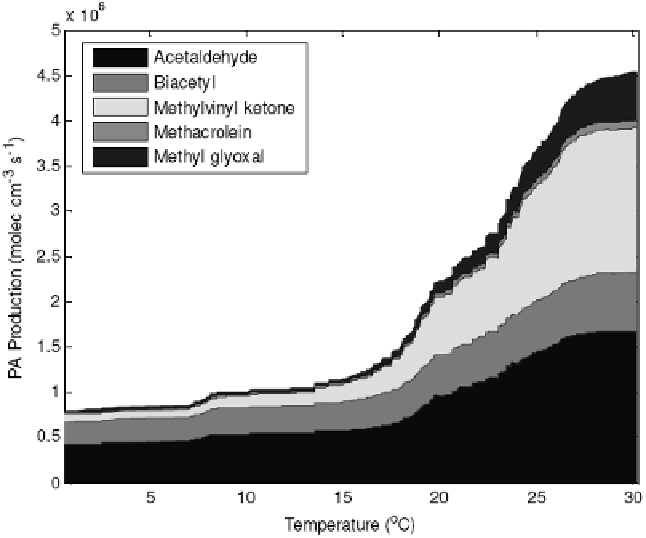Environmental Engineering Reference
In-Depth Information
Sierra Pacific Industries and adjacent to the University of California Blodgett
Forest Research Station (UC-BFRS). The site is located 75 km northeast of
Sacramento, CA (1,315 m a.s.l., 38.9°N, 120.6°W). The experiment began on
August 15, 2007 and ended on October 10, 2007.
In this analysis we use measurements of APNs, OH and HO
2
, a suite of VOCs,
and NO
2
. These observations are used to evaluate a detailed chemical model of
APN ratios and concentrations. We find the ratios of APNs are nearly independent
of the loss mechanisms and thus an especially good test of our understanding of
their sources. We show that oxidation of methylvinyl ketone, methacrolein, methyl
glyoxal, biacetyl and acetaldehyde are all significant sources of the PAN + peroxy
acetyl (PA) radical reservoir, with methylvinyl ketone (MVK) often being the
primary non-acetaldehyde source.
Figure 1 s
hows the relative contribution of the
various PA radical sources to the total PA radical production rate. At high tempe-
atures, oxidation of non-acetaldehyde PA radical sources contributes over 60% to
the total PA production rate.
Acknowledgments
The authors thank the UC Blodgett Forest Research Station staff for
logistical support and Sierra Pacific Industries for access to their land. This work was supported
by the National Science Foundation (grants ATM-0639847 (Berkeley) and ATM-0633897 (UW)).
B. LaFranchi acknowledges support from the Camille and Henry Dreyfus Postdoctoral Program
in Environmental Chemistry. G. Wolfe acknowledges support from NASA ESSF NNG-05GP64H.
Fig. 1.
Behavior of different PA production sources vs. temperature during BEARPEX 2007.
This figure is obtained by using a running average with temperature of the calculated production
rates from observations of oVOCs

